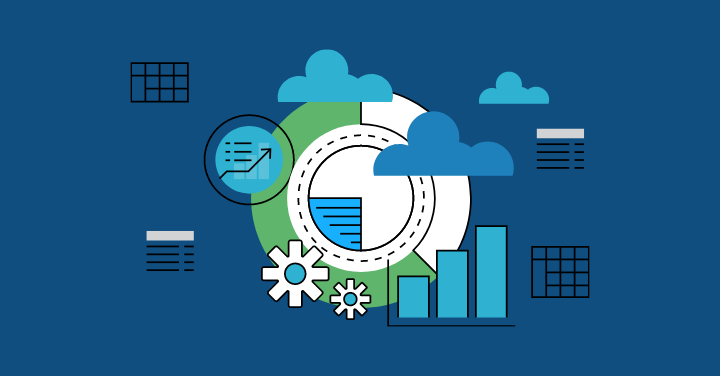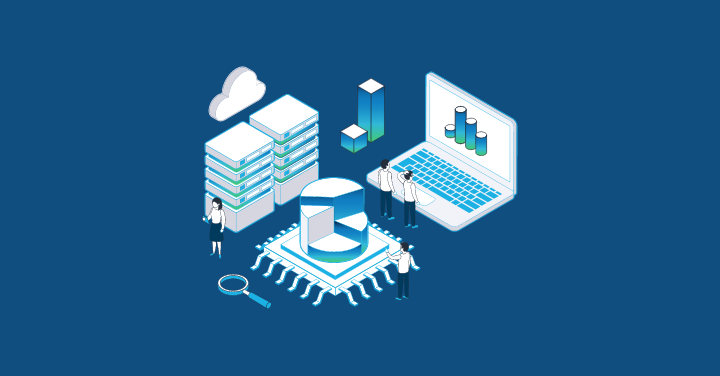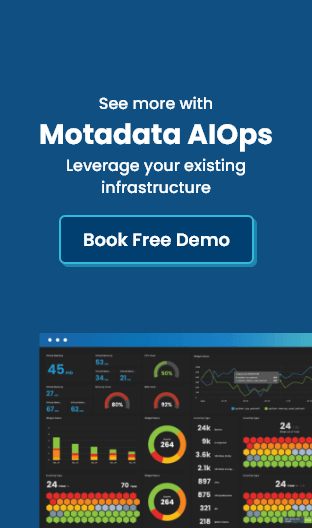One wrong move and the organization’s critical systems could trigger a system-wide collapse.
IT Manager’s role is not as simple as it sounds; instead, they face a daily, high-stakes balancing act: ensuring network uptime while delivering exceptional IT service reliability.
Rapid advancements in AI and cloud technology are simplifying things for users, but monitoring and managing the entire network infrastructure is still a full-time job that demands precision.
Every minute of downtime is more than a technical issue in the IT environment. Delays in troubleshooting such issues can cause business disruption, impact user satisfaction, and damage productivity.
Managing this delicate equilibrium isn’t easy. IT Managers are under constant pressure to respond to issues quickly and maintain high service levels.
Today, the world we live in prioritizes user satisfaction. Even a poor network performance can tarnish IT’s reputation across the business. Thanks to robust network monitoring software available in the market that can help IT Managers overcome this challenge.
The network monitoring software for IT managers isn’t just another tool but a strategic ally with proactive IT management capabilities and critical intelligence that can save your business from downtime issues.
Let’s explore how proper network monitoring capabilities empower IT Managers and Operations leaders to reduce costly downtime and consistently deliver higher-quality IT services to their users.
Breaking the Reactive Cycle: From Firefighting to Proactive Control
In most businesses, IT teams work on issues only after a user files a complaint about service failure. Just imagine if the same thing happened for a website or platform with heavy traffic: The IT team’s dashboard might get flooded with alerts and complaints.
As a result, dashboards light up, and stressed engineers scramble to diagnose and patch the problem. Meanwhile, users experience frustration, SLAs are breached, and IT’s credibility takes a hit.
Imagine if the same thing had never happened and the issue had been resolved before it grabbed the user’s attention. Modern network monitoring software for IT managers helps track the problem in real-time with continuous scanning. These tools detect early warning signs and enable an appropriate solution.
Some of the key capabilities of this robust monitoring tool are:
- Early Warning System: Application performance monitoring tools work continuously and alert when discovering any unusual traffic pattern or performance degradation. Minor packet losses or unusual drops in data transfer rates can all signal underlying problems that, if left unaddressed, could escalate into critical service disruptions. Investing in these powerful tools helps inform the team operators before the situation becomes a full-blown outage.
- Beyond Thresholds: Instead of relying on static threshold systems, these network device monitoring solutions use baselining, AI and machine learning techniques to understand the pattern and flag anomalies. They use these advanced methods and alert if anything unusual happens. Further, it helps catch emerging issues that would otherwise stay hidden until they become serious problems.
- Intelligent Alerting: Another significant advantage of switching to a modern network monitor is correlating alerts across devices, locations, and services to eliminate noise and highlight real problems. IT Managers, IT Operations Leads, or Infrastructure Managers no longer need to invest time and energy in reacting to false alarms. With intelligent network monitoring software, alerts are filtered and appropriately grouped, highlighting real ones.
- Capacity Foresight: Team members may gain more visibility into emerging bandwidth, network hardware, or cloud resource constraints using historical reporting features and trend analysis. Service quality degrades if networks, servers, or cloud environments quietly run out of bandwidth, memory, or processing power before anyone realizes the root cause. Using these insights, one can even prevent performance bottlenecks and plan upgrades.
By shifting from a reactive firefighting cycle to proactive IT management, IT Managers need to spend less time on emergency fixes. Rather, they can work on other areas, strategize for their future resources, and make improvements, thus ensuring smoother business operations and less downtime stress.
When Downtime Strikes: Accelerating Recovery & Minimizing Business Impact
Sometimes, IT Managers fail to prevent downtime even after proper scanning and issue resolution. For instance, hardware can fail unexpectedly, or bugs can occur during software updates, leading to downtime. No matter how well-prepared you stand together as a team, incidents will happen from time to time.
So remember, resolution speed is the most critical factor when downtime strikes. The longer your system is offline or not performing well, the greater the impact on your operations, productivity, and customer satisfaction.
Your dashboard might start encountering thousands of requests from your customers. Every minute will be counted, and IT Managers will be under immense pressure to fix the problem.
Relying on third-party sources to identify the fault or fix the bug can waste time. Instead, use network visibility tools that will run quick diagnoses and recover your systems in these high-stress moments. Network Visibility tools act as the diagnostic engine; here’s how:
- Rapid Root Cause Analysis (RCA): The comprehensive visibility provided by the tool allows IT managers to identify the root cause of the problem contributing to extended downtime. Traditional monitoring tools often manually check logs and devices, which could be time-consuming. However, this modern network visibility tool provides access to rich historical performance data, runs scans through network topology maps, and identifies where errors happen. With this quick root cause analysis, IT Managers can reduce Mean Time to Resolution (MTTR).
- Contextual Data: Network issues can happen anytime, but what matters the most is that you have access to the correct data at the right time. Good network performance monitors automatically collect and organize the relevant data, i.e., traffic flow insights, device logs, and other performance metrics. With access to this contextual data, identifying what, why, and where went wrong becomes easier. Let’s say there was some congestion due to an unexpected traffic spike on your application. The tool will immediately show you insights related to flow data to resolve the issue. With these valuable insights, troubleshooting might become faster.
- Dependency Awareness: Identifying issues in large organizations with complex networks can be challenging. However, with modern monitoring tools, IT Managers and operations leaders can map how different devices, servers, and applications are connected and depend on each other. This dependency awareness helps assess issues faster and restore critical services in real time.
By incorporating this tool into practice, IT Managers can significantly shorten outages and maintain operational continuity by lowering disruption costs. Further, it reduces stress and enables IT experts and managers to focus on other areas of improvement.
Elevating Service Quality: How Network Health Translates to User Satisfaction
For businesses, the quality of IT services is no longer just about fixing issues quickly—it’s about delivering a seamless experience from the start. If your network is unstable or slow, no matter how well you have designed your application or if top-notch services are available, it can impact user experience.
Stable and high-performing network infrastructure is the foundation for excellent IT service delivery. You might have noticed that applications with poor network infrastructure or dropped connections have a higher bounce rate. However, when networks run smoothly, users enjoy faster application performance and return for quality service.
Network performance and user satisfaction are directly connected. Hence, IT Managers must prioritize network health to consistently meet service expectations and business goals.
Here’s how investing in advanced network monitoring software can contribute to service quality:
- Consistent Application Performance: Businesses run several critical applications that rely heavily on networks, such as CRM Software and e-commerce platforms. With this powerful network monitoring solution, these applications have the reliable bandwidth and low-latency connectivity required to perform optimally. It even helps detect packet loss and high latency issues before they impact users, thereby helping employees and customers work efficiently.
- Meeting & Proving SLAs: Service Level Agreements (SLAs) are essential for setting clear expectations around uptime and performance. However, meeting SLAs isn’t enough. IT Managers must also prove that they are meeting them. Monitoring tools provide objective data to track network uptime, response time, and performance metrics. Thus helping to identify gaps and maintain transparency between IT and the business.
- Positive End-User Experience: When customers encounter application timeouts, slow loading times, or frequent network disconnections, they switch to other platforms, leading to a drop in productivity and revenue. Over time, this issue can impact customer loyalty. With continuous network health tracking and responding to detected early warning signs, IT managers can build a positive user experience and run smooth operations.
- Data for Continuous Improvement: Even with a strong network, relying on a tool that provides detailed insights on performance and incident data over time is best. Analyzing this data can help prevent future risks by identifying unusual patterns in real time. Furthermore, you can track recurring problems or weak points in the IT infrastructure that impact service quality.
Essential Network Monitoring Capabilities for the IT Manager’s Toolkit
Choosing the right network monitoring software for IT managers isn’t just about checking if devices are online. Some tools come with a steep learning curve, so make sure to check the following key features when selecting the best network monitoring tool:
- Comprehensive Visibility: With digital advancements, networks are no longer limited to on-premises systems but span cloud services and remote offices. Monitoring only a specific portion of the IT environment can cause trouble. Hence, invest in a tool that offers comprehensive visibility, i.e., monitors every critical component. Whether it is a physical device, virtual machine, or network service, the tool must be capable of monitoring all from a single location. IT Managers can manage risks more effectively and ensure a seamless user experience when they have complete visibility across hybrid environments.
- Intelligent Alerting & Correlation: Too many alerts can overwhelm IT teams, causing alert fatigue and potentially missing critical alerts. Modern network monitors utilize intelligent, alert systems to generate context-aware notifications based on dynamic thresholds. They also correlate related alerts, ensuring that IT managers receive alerts only when something significant happens and no unnecessary alerts.
- Robust Diagnostics & RCA Tools: Ensure the comprehensive network monitoring tool includes diagnostic features such as network topology maps and historical data analysis, which help quickly identify the root cause of problems. Rather than doing the guesswork, investing in such a tool is best to get clear guidance on where the issue lies and how to resolve it.
- Performance Baselining & Anomaly Detection: Performance baselining tracks normal behavior over time. It helps understand what “good” performance looks like for a network. Anomaly detection uses this baseline to spot deviations before they escalate. Thus, it catches potential issues early and reduces the risk of uncertain outages.
- Transparent Reporting and Dashboards: IT Managers communicate network performance to executives, stakeholders, and service owners. Hence, clear dashboards and customizable report features are a must. With proper dashboard availability, IT managers can provide real-time visibility into network health. Furthermore, visual reports with in-depth insights into uptime and incidents facilitate informed decision-making.
- Scalability: As businesses grow, networks expand. A modern network monitoring solution must scale seamlessly, adapting to increasing demands without compromising performance or necessitating a complete platform overhaul. Scalability ensures that IT Managers stay ahead of growth, keeping network management efficient and cost-effective.
Empowering Your Team, Proving Your Value
IT managers face challenges in standing out in the fast-paced digital world. They must ensure network availability, deliver seamless application performance, and protect against potential threats. With the growing reliance on omnichannel contact center solutions, maintaining a good user experience becomes even more critical.
The right network monitoring software for IT managers is no longer optional; it’s an essential strategic tool. Solutions like PRTG Network Monitor, known for their ease of use and powerful real-time insights, allow IT teams to proactively manage performance issues and complex network environments.
Motadata’s network monitoring solution is another top choice for most IT managers regarding monitoring and managing network environments, including cloud infrastructure, extensive networks, and hybrid setups.
Through comprehensive network maps, IT Managers gain a clear visualization of all devices, making it easier to spot issues and troubleshoot efficiently.
Further, customizable dashboards and detailed reports allow managers to track performance trends, SLA compliance, and other details in real time. Download the free trial version or request a demo to see how Motadata can help reduce downtime.
Remember, by equipping your team with network security monitoring tools that support proactive IT management, you create a stronger, more resilient IT environment. In the long run, a robust network monitoring strategy protects your network from potential threats and positions IT as a true business enabler, driving productivity and empowering users.
Ready to reduce downtime and elevate your IT services? Explore solutions like Motadata and experience the future of proactive network management.
FAQs:
Basic network management tools focus more on device configuration and routine operations. On the other hand, network performance monitoring tools scan the entire environment, track performance, detect anomalies, and enable faster incident response. Thus, they provide the situational awareness critical for network uptime.
Performance monitoring tools provide comprehensive, contextual data that helps in root cause analysis. These insights allow IT Managers to diagnose problems faster and make informed decisions about quick fixes.
Network monitoring platforms generate insightful reports that show network uptime trends, incident resolution times, SLA compliance, capacity constraints, and other key metrics. These insights make it easier to build business cases for upgrades or showcase IT’s impact on operational resilience.






